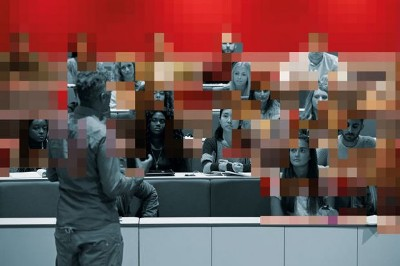Over the past decade, I’ve been teaching students across Asia, Australia, Europe and the US from my office in rural south-west Ireland. When I started this endeavour, virtual classrooms were sniffed at by most in higher education, from first-year students to vice-chancellors. In spite of this, I stuck with it, working with colleagues to ensure the best possible connectivity so that the experience would be in no way suboptimal for my students.
We experimented with different programmes, grasping and embellishing the things that worked and doing away with those that didn’t. Eventually, emerging technologies started to inform how each class was designed. By now, we have delivered well over 500 seminars to 3,500+ attendees, using more than 10,000 film clips, slides and other multimedia resources.
Since 2012, the uptake of virtual learning has accelerated the world over. Of course, the great catalyst for this expansion was the pandemic, when students and teachers everywhere were forced to rethink teaching and learning from inside their own homes. Universities the world over were forced to confront their ongoing issues with digital access and, by December 2020, 92 per cent of students in the UK were learning either fully or mostly online. Teaching practitioners discovered that virtual classrooms, when used correctly, could be extremely effective.
Better and more accessible technology has meant that learning online has outlasted the darkest days of the global lockdowns. In a survey published in September by Jisc, UK higher education’s main technology organisation, students said they now prefer blended learning to in-person. Last month, a review of blended learning at UK universities by the Office for Students found that students value “the flexibility of asynchronous online lectures” as it allows them to learn at their own pace.
And yet, we still talk about “digital education”.
In his excellent 2021 report on digital teaching, Sir Michael Barber found that when we are designing successful education programmes for the future, “technology cannot just be bolted onto existing teaching material”. It seems to me that part of the problem boils down to the way in which we perceive education itself. Digital technology will never be properly integrated if it is seen as something separated from the hard work being practised in-person, day in and day out in the classroom. Nobody ever mentions “digital communication” any more – we simply email, WhatsApp, instant-message and share stories on social media without a second thought. We need to start taking the same approach to how we learn.
The best way to break away from the idea that digital education and education are separate categories is to ensure practitioners are given the resources they need to truly understand the technological programmes they’re expected to use. Government has a key role to play here, but it will also require some perceptive foresight on the part of teachers and – especially – curriculum builders.
Technology will inevitably become better integrated into lesson plans as more and more “digital natives” from Generation Z enter the workforce, but the fact remains that digital tools are living, fluid things, ever-changing and developing. If we have learned anything from the past few years of virtual teaching, it is that practitioners need to better prepare for how their future students will learn. Surely this should be the goal of all professional development, to make us better at delivering uncontested outcomes.
I’m personally convinced that the most immediate challenge facing us lies in finding a satisfying and sustainable balance between the collective and individualised experience. Educators should be keenly aware of the rise of entertainment pursuits that provide a bridge between the solitary and the shared – most notably, immersive gaming. Of course, I am not advocating for the “gamification” of education. Rather, I am suggesting that we should acknowledge the new environments that young people want to inhabit and adapt them for the classroom.
One of the buzziest examples is the so-called metaverse: the imagined future of the internet, characterised by virtual and augmented reality. Only last month we learned that Chinese universities are investing heavily in metaverse technologies in order to establish their leadership in the field. Recent research undertaken by educationalists in the US has found that virtual learning can help increase interest and motivation among students and improve both personalisation and collaborative learning. However, many challenges still exist with the use of virtual or augmented technologies, not least in relation to accessibility and affordability.
The goal should not be to replace our brilliant physical classrooms with headsets that promise trips to distant galaxies or to the bottom of the ocean. But we must aim at least to treat these emerging technologies as exciting tools – additions to our arsenal – and to engage with what they can offer when designing future curricula.
The educational metaverse should not be siloed off into its own category of learning. Instead, like online lessons and digital resources, let’s integrate it into existing and emerging pedagogies before it’s too late.
David Puttnam is an educator, film producer and a recently retired member of the House of Lords. Since 2012 he has been chairman of Atticus Education, a pioneering education company delivering audio-visual seminars on all aspects of the screen-based industries to students around the world. He is chair of the Education Advisory Board of Nord Anglia Education and president of the National Film and Television School.


